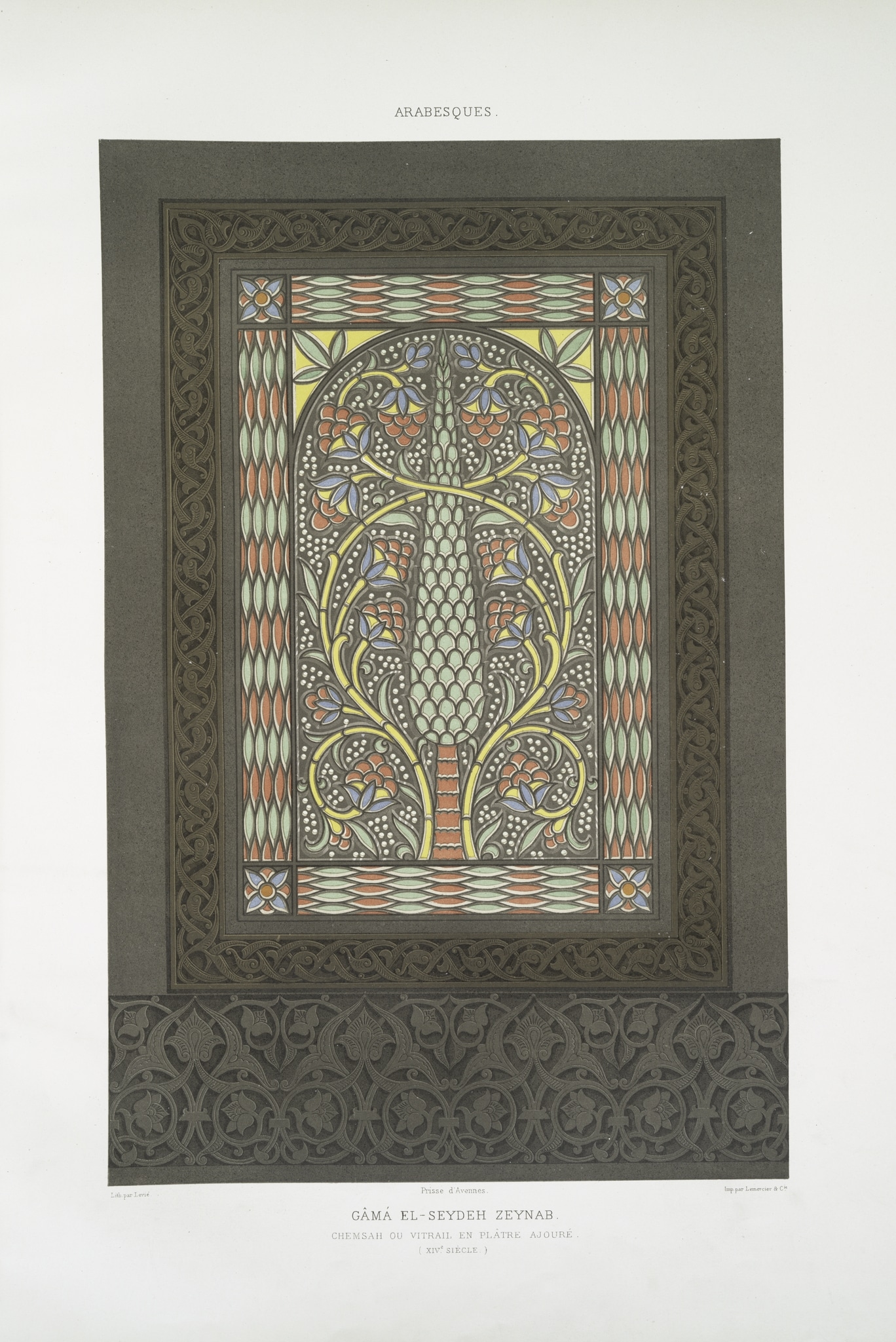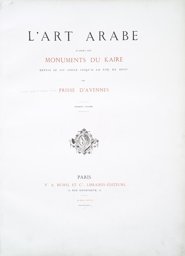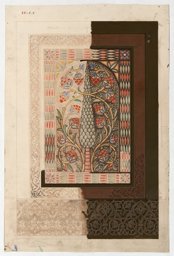Pl. CXLIV in vol. 3 of Émile Prisse d’Avennes’ L’Art arabe d’après les monuments du Kaire depuis le VIIe siècle jusqu’à la fin du XVIIIe, 1877. The plate shows a single stucco and glass window with central cypress tree entwined with a yellow tendril with red flowers. The cypress tree is framed by an arch; the window is completed by a border of green and red interlaces, and flowers in the corners. The background is perforated.



